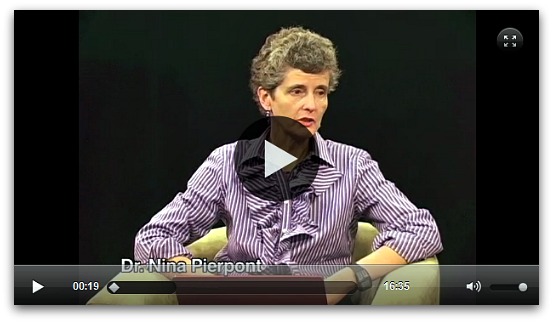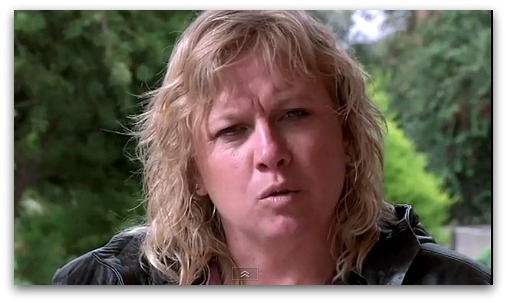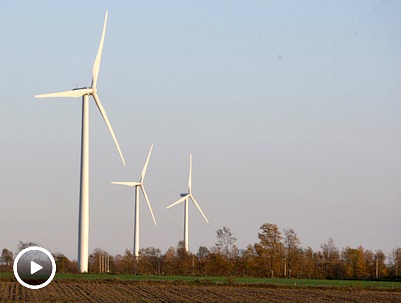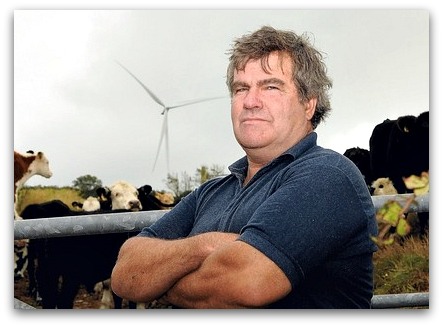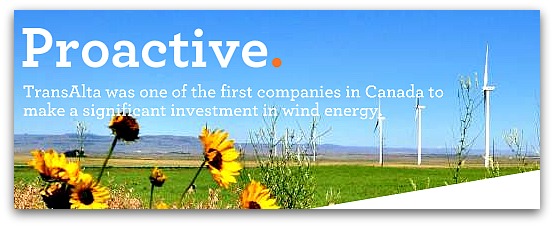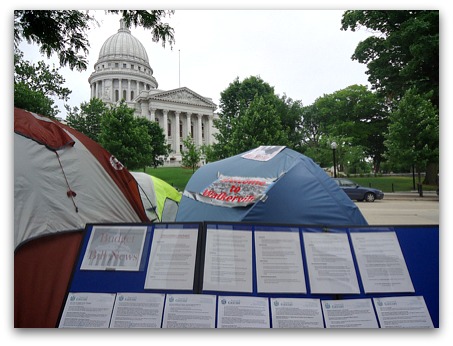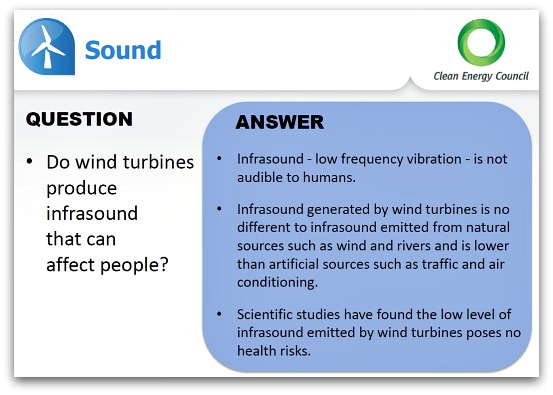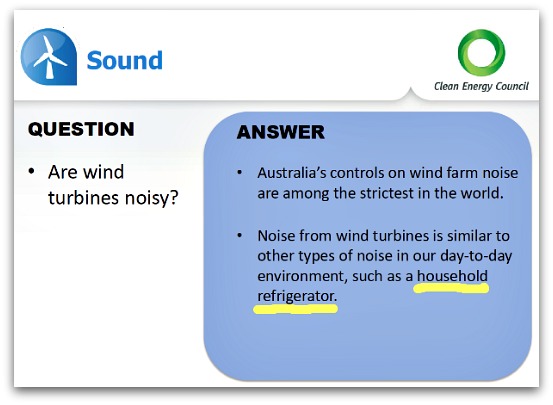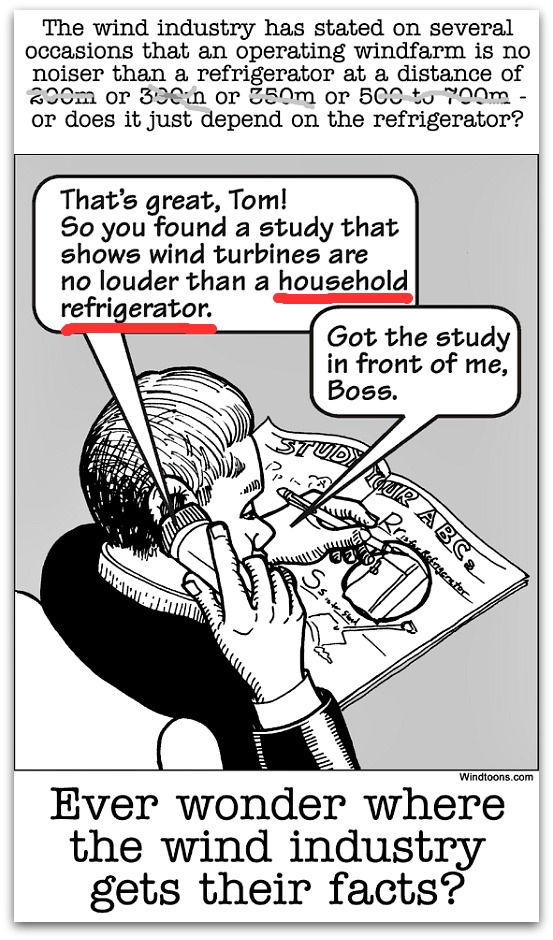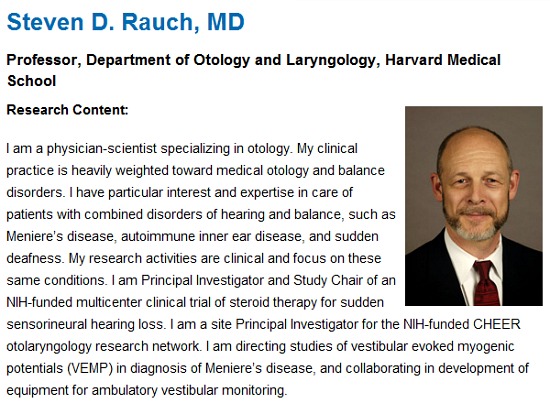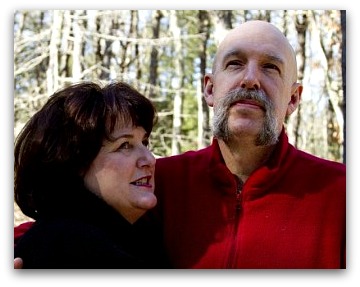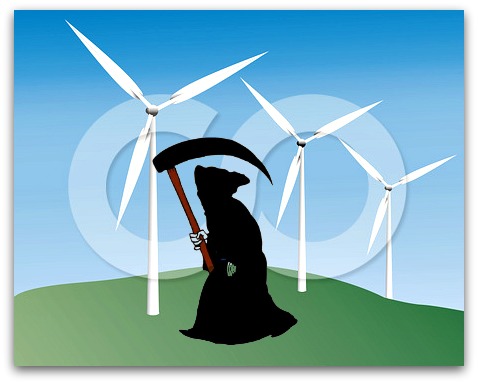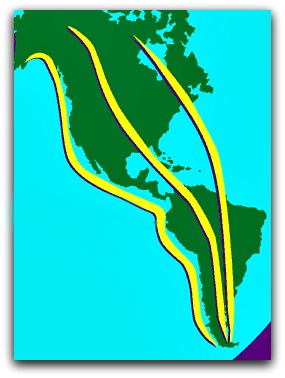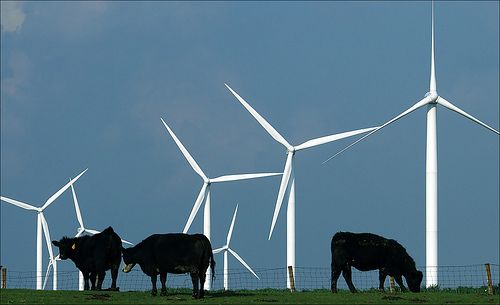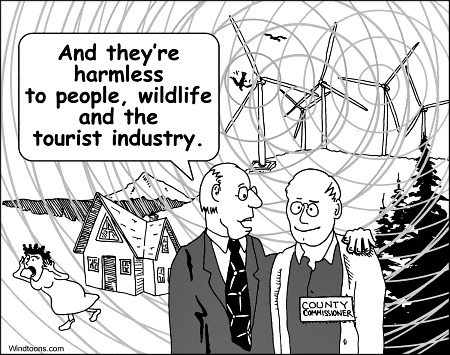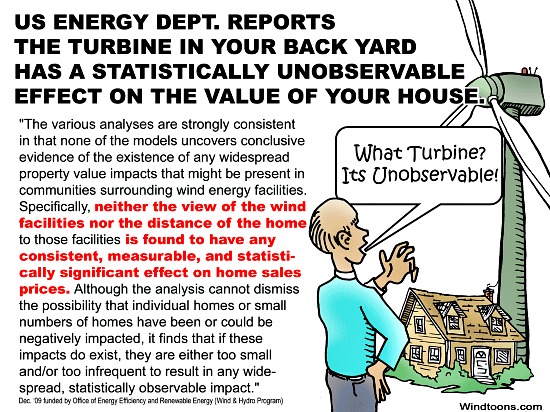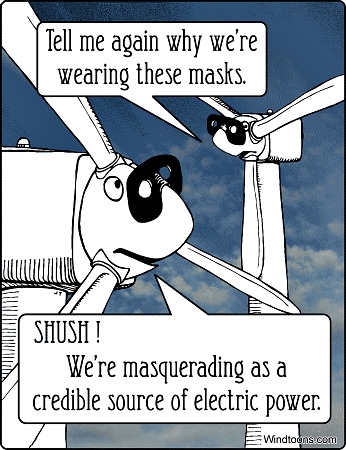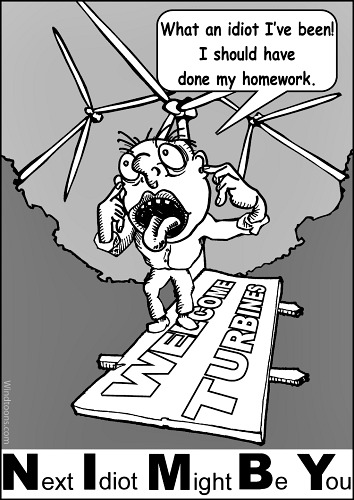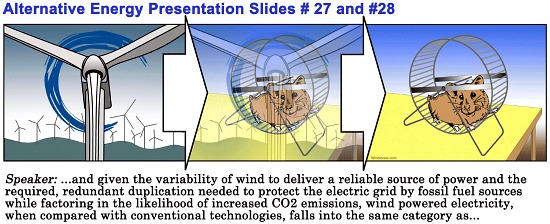·
… from a “Submission to the Joint Senate Committee on Australia’s Clean Energy Future Legislation”

·
—Sarah Laurie, MD, Medical Director, Waubra Foundation (9/22/11)
I am writing to express my deep concern at the unintended but inevitable consequences of serious harm to the health or rural residents which will ensue if this federal government legislation is passed without the concurrent adoption of a precautionary approach to the siting of wind turbines with respect to homes and workplaces, and the immediate funding of proper independent acoustics and medical research, as recommended by the Senate Inquiry into Rural Wind Farms in June 2011.
There are now well over 20 rural families in Australia, who have been forced to leave their homes because of serious health problems they have developed since the turbines commenced operating.
- One family I am aware of is essentially homeless.
- Another is living in a shed.
- Another in a caravan, advised by his treating doctor not to go back when the turbines are turning, as it is his professional opinion that this man’s life is in danger because of the worsening of his already serious health problems including angina.
- Some individuals have endured significant ill health and chronic severe sleep deprivation for 13 years, and have not often spoken publicly about it, because of the ridicule they have endured.
Some farmers are saying even if they move away, they get sick when they return to farm their land, which is consistent with what we know about the effects of ongoing exposure to low frequency noise, once someone is “sensitised”.
Not all the health problems resolve, and a number of previously healthy productive and still young members of society find themselves significantly disabled, through no fault of their own, as a result of their chronic exposure to operating wind turbines. Some worked on the wind turbines.
After having interviewed over 80 people in Australia now, I have found that most of these people initially supported the wind turbines coming into their communities, seeing this as a good development for their area.
This pattern of illness, and the identical range of symptoms, is being reported all over the world, in conjunction with operating wind turbines. Universally, the symptoms ameliorate with cessation of exposure, only to return again when people are re-exposed to operating wind turbines. (For further detail, please see my submission to the Federal Senate Inquiry into Rural Wind Farms, together with the additional materials submitted to that inquiry—a peer reviewed journal article by Professor Carpuccio from Warwick University, a meta-analysis on the multitude of serious well known effects of chronic severe sleep deprivation on human health, with particular effect on increased risk of heart attacks, high blood pressure and strokes.
Some turbine hosts are also having to move because they too get sick, as do their young children and their elderly parents, as rural households and farms are often multigenerational. These farmers were all told by the wind developers that “there are no health and noise problems”, and are now realising that this is untrue. Many are unwilling to speak out for a variety of reasons, which include in some circumstances confidentiality clauses. One large wind developer I am aware of has clauses in their host landholder contracts which stipulate that the host cannot complain “to any government department about the noise impact”. This, together with the confidentiality clause, has ensured people’s silence.
The CEO of the National Health and Medical Research Council, Professor Warwick Anderson, has expressed his concern on a number of occasions with the way the wind developers are ignoring his recommendation to adopt a precautionary approach, and are instead relying far too heavily on the summary paragraph in the 2010 NHMRC Rapid Review which states there is no evidence of direct pathological adverse health effects caused by wind turbines.
However, as Professor Anderson also points out clearly in his evidence to the Senate Committee on Rural Wind Farms (Hansard, 31st March, 2011), no evidence does not mean no problem, especially when there has been so little research done globally. In particular, when asked by Senator Fielding about the reliance the wind industry and governments are placing on the summary statement of the NHMRC, Professor Anderson explicitly says “we do not say that there are no ill effects. We definitely do not say it that way.”
Professor Anderson also mentions the growing number of case reports or anecdotes, and emphasises the importance of these reports to help inform future researchers. These sorts of case reports or anecdotes are the beginnings of true scientific discovery, and indeed have been reported over the world for almost 10 years in conjunction with operating wind turbines, starting with Dr Amanda Harry, in the UK in 2003, closely followed by Dr David Iser, Victorian Rural GP from Toora in 2004, and by Dr Nina Pierpont, who did her case series cross-over study over the ensuing years, which she submitted to the Australian Federal Senate Inquiry into Rural wind farms at Submission number 13.
Most recently Professor Robert McMurtry, former Dean of the University of Western Ontario Medical and Dental School, and former adviser to the Health Minister in Canada has established an organisation called the Society for Wind Vigilance, set up for the same reasons as the Waubra Foundation in Australia. He has now interviewed over 130 people in rural Ontario, and found exactly the same range of symptoms as his predecessors, and myself. Professor McMurtry’s learned literature review was submitted to the Federal Senate Wind Farm inquiry at Additional Materials Number 16. His recent paper in the peer reviewed publication devoted solely to this important issue of adverse health effects from wind turbines can be found here.
Rather than taking notice of the escalating calls by concerned medical professionals, instead, the clinical whistleblowers have all been routinely dismissed, as “scaremongers” or people with a “vested interest”. Some have been threatened. The affected residents themselves are told that “they couldn’t possibly be getting the symptoms they are getting” because “there is no evidence” and are routinely denigrated and vilified, and their complaints ignored or dismissed by arrogant uncaring wind developers, who privately admit that they know people are indeed getting sick but “the law allows it”.
I have heard of too many situations of rural residents being openly referred to as “collateral damage” or “policy roadkill”, even in their hearing, by bureaucrats at all levels of government. They seem unaware of the possibility that they could have a duty of care. I would urge them to ensure they read and take note of the Waubra Foundation’s Explicit Cautionary Notice.
·
Developments since the Senate Inquiry Report Was Released in June 2011
This is a rapidly changing field. There are developments globally via court actions, via research into various aspects of health and noise subsequently published or presented at relevant conferences, and via changes in government regulations to take account of this new knowledge. A useful recent summary co-authored by the Senior Retired Pharmacist and co-founder of the Society for Wind Vigilance Carmen Krogh, entitled “Summary of New Evidence on Adverse Health Effects and Industrial Wind Turbines, August 2011.”
A recent court case in Ontario should give all involved pause for thought. The relevant extract is reproduced below:
While the Appellants were not successful in their appeals, the Tribunal notes that their involvement and that of the Respondents, has served to advance the state of the debate about wind turbines and human health. This case has successfully shown that the debate should not be simplified to one about whether wind turbines can cause harm to humans. The evidence presented to the Tribunal demonstrates that they can, if facilities are placed too close to residents. The debate has now evolved to one of degree.” (p. 207) (Emphasis added)1
There are currently cases in courts in the UK, Canada and Australia, which involve either harm to health, or allegations together with good evidence that noise conditions have been breached. This is all avoidable, with better informed planning regulations, based on credible independent research, which all parties can trust.
There are also reports of turbine developments which have been shut down by courts, because they have breached their conditions or because of the numbers of noise complaints (Scotland). Recently, the High Court in the UK has found that Amplitude Modulation, which for a long time was denied by the industry, is now something which they need to take account of.
The Danish Government’s Ministry of the Environment is implementing changes to their regulations with respect to low frequency noise, as they are recognising that this is a significant and growing concern.
Danish Minister for the Environment has decided that a limit value for low frequency noise [to 20dB inside] from wind turbines must be determined. . . . It is expected that the revised Statutory Order on Wind Turbines may be submitted for public hearing during autumn and may enter into force at the end of 2011.”
This has followed publication of a very important paper by Danish Acousticians Moller & Pedersen, published in a peer reviewed Acoustics Journal, (Moller H, Pedersen CS, Low Frequency Noise from Large Wind Turbines in J. Acous. Soc. of Am. 129 (6) June 2011 pp 3727-3744). They found that larger turbines emit more low frequency noise proportionately compared to smaller turbines, based on actual noise measurements, rather than models. The effects of this can be seen at wind developments where the turbines are larger such as Waterloo wind development in South Australia, where residents report the effects of the low frequency noise out to 10km in certain weather and wind conditions. Waterloo now has a total of 5 households who have left their homes semi-permanently, as they become too unwell when they are home if the turbines are operating and the wind is blowing from certain directions.
Low frequency noise has been known by acousticians for years to cause a range of non-trivial symptoms in some individuals, which Professor Geoffrey Leventhall himself has acknowledged on a number of occasions are identical to those described by Dr Nina Pierpont in her study on what she has called “Wind Turbine Syndrome”. Most recently, Professor Leventhall stated this at the NHMRC workshop in Canberra on 7th June, 2011. He now attributes these symptoms to “stress”, rather than to low frequency noise, a marked change from his position in 2003 before he started working for the wind industry. It is instructive to read a literature review of which he was co-author in 2003, entitled “A review of published research on low frequency noise and its effects Report for DEFRA UK May 2003“, with particular reference to page 49.
A paper by Dr Guo from Western Australia, presented in 2009 to an Acoustics meeting in Adelaide, illustrates the importance of doing acoustic and vibration measurements inside the homes of affected residents, as the Senate Inquiry has recommended, in order to establish what the causative mechanism for the health problems might be for these rural residents affected by operating wind turbines. In that instance, the source of low frequency noise was from a railway rather than a wind turbine, but the physical properties of the forces involved are similar, and the issues of the increased penetration of low frequency sound waves through dwellings and resulting amplification under certain circumstances is particularly relevant.
Just two days ago, a paper by Dr Michael Nissenbaum and delivered by co-author Dr Chris Hanning at the recent International community noise conference in London in July, was released for circulation. It is a small study, but clearly documents that the reported sleep deprivation in conjunction with wind turbines is very real, is reproduced at different developments with different topography and numbers of turbines, and has measureable effects using standardised questionnaires used globally to measure sleep disturbance, further confirming that these problems are real.
The Waubra Foundation is currently releasing two linked documents entitled “A Wind Turbine Noise Measurement and Control System (NMACS) System Specification”. This presents government with a simple and elegant noise measurement system applicable to current and future wind turbine developments.
Below is a list of medical practitioners who have done some work or research in the area, and who have expressed their concerns. It is followed by a list of relevant professionals from a variety of countries, and a variety of professions, who have also publicly expressed their concern about the reported problems, and the need for urgent independent multidisciplinary research. What unites us all is our concern for the current situation. The researchers’ work is almost all freely available from websites such as National Wind Watch, The Society for Wind Vigilance, Wind Turbine Syndrome, and The Waubra Foundation.
So are many of the case reports from affected residents, from around the world.
Dr Amanda Harry (UK), 2003
Dr David Iser (Australia), 2004
Dr Nina Pierpont (USA), 2009
Dr Robert McMurtry (Canada), 2010
Dr Chris Hanning (UK), 2010
Dr Michael Nissenbaum (USA), 2010
Dr Sarah Laurie (Australia) 2011.
Associate Professor Jeffrey Aramini (Epidemiologist, Canada)
Professor Arline Bronzaft (Psychologist, and researcher into effects of noise on Children, USA)
Dr Con Doolan (Mechanical Engineer, Australia)
Professor Colin Hansen (Mechanical Engineer, Australia)
Professor John Harris (Physics, Canada)
Mr Rick James (Acoustician, USA)
Dr Mauri Johanssen (Medical Practitioner, Denmark)
Ms Carmen Krogh (retired Pharmacist, Ontario)
Dr Andrew Lavendar (Former President of the South Australian Medical Association, Australia)
Dr Hazel Lynn (Medical Practitioner, Grey Bruce Health Unit, Canada)
Dr Andja Mitric-Andjic (Rural General Practitioner, Australia),
Dr Helen Parker (Psychologist, USA)
Mr Bill Palmer (Acoustician, Canada)
Mr George Papadopolous (Pharmacist, Australia)
Professor Carl Phillips (Epidemiologist, USA)
Mr Rob Rand (Acoustician, USA)
Ms Maggie Ross (retired Psychologist, Australia)
Professor Alec Salt (Physiologist, leading researcher into the effects of infrasound on the cochlea, USA)
Dr Peter Sharley (Current President of the South Australian Medical Association, Australia)
Dr Daniel Shepherd (Psychologist, New Zealand)
Dr Wayne Spring (Specialist Sleep Physician, Australia)
Dr Bob Thorne (Psychoacoustician, Australia and New Zealand)
Dr Henning Thorell (Medical Practitioner, Sweden)
Dr Alan Watts OAM (Rural GP, Australia)
Dr Colleen Watts OAM (Scientist, Australia)
Dr Max Whisson (retired Pathologist and Medical Researcher, Australia)
It is time the wind industry and government denials of the adverse health problems ceased, and that proper independent research was done as a matter of urgency. It is also time that Professor Warwick Anderson was listened to with respect to his urging of adoption of a precautionary approach, until we have further credible information.
On the basis of our field research, the Waubra Foundation recommends a distance of 10 kilometres, as that is the outer limit of where people are currently reliably reporting symptoms which correlate with wind turbine operation, particularly at the wind developments where larger turbines are placed on ridges. Until then, we do not know what distances are safe.
If this carbon tax legislation is approved by the Australian Parliament, and if there is no change to current practices at the State Government planning level, (preferably based on well conducted transparent independent research), it will inevitably result in serious harm to the health of many rural citizens of Australia, including vulnerable citizens such as the elderly, children, and the disabled. Such developments could be found to be in breach of UN Conventions, such as those pertaining to the Rights of Disabled Citizens. Such complaints have already been lodged with the UK government, and I understand that residents of other countries are also preparing similar complaints.
·
References:
1. Environmental Review Tribunal, Case Nos.: 10-121/10-122 Erickson v. Director, Ministry of the Environment, Dated this 18th day of July, 2011 by Jerry V. DeMarco, Panel Chair and Paul Muldoon, Vice-Chair.
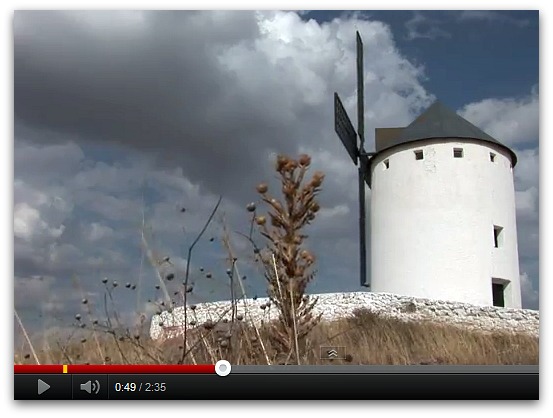 “Con with the Wind”: Click anywhere above to watch the trailer
“Con with the Wind”: Click anywhere above to watch the trailer


